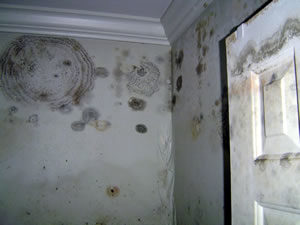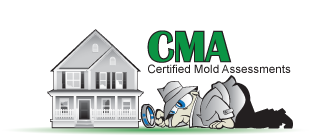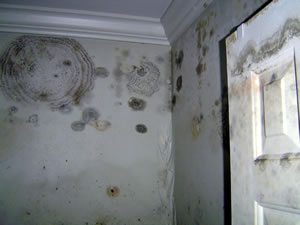 It’s simply not true that all residential mold, in any quantity, is dangerous. What is true is that mold colonies, once they build up to a substantial level, can (and will) cause serious problems for homeowners. You’ve probably seen a segment on your local news channel, or read an article online, that shows just how devastating a full-scale mold invasion can be.
It’s simply not true that all residential mold, in any quantity, is dangerous. What is true is that mold colonies, once they build up to a substantial level, can (and will) cause serious problems for homeowners. You’ve probably seen a segment on your local news channel, or read an article online, that shows just how devastating a full-scale mold invasion can be.
The good news is, there are easy and effective mold prevention strategies that can keep your home free of such travails. But what happens if you do discover a substantial mold factor in your home?
All is not lost. If mold has gotten out of hand, a professional can be called in to perform what’s known as mold remediation. When done well, this process will cleanse your home of unwanted mold and give you the fresh start you’ve been looking for.
But what actually happens during a professional mold remediation? As a homeowner concerned about the healthy and wellbeing of your family, what do you need to know?
1. Safety and Setup
A professional will not simply show up and start spraying chemicals or removing mold—anybody who does this should definitely not be trusted. Mold remediation has risks, and it’s also a process that requires proper planning and setup.
If you’ve hired a mold remediation specialist, they’ve probably already performed a detailed assessment of your home. They’s discussed the strategy with you and talked about the specific methods and time frames they’ll be working with. Your professional should discuss containment and safety measures with you in detail, and setup the remediation area properly, before introducing any chemicals or removing any mold-infested materials.
Depending on the extent of the problem, the professional may set up barriers of plastic in order to keep mold contained while they remove it. You’ll also notice that mold remediation professionals wear protective gear, including full-body hazmat suits in many cases, in order to guard themselves against exposure while getting down and dirty with mold.
2. Remediation
Once everything has been meticulously and professionally setup, the actual process of removing mold can begin. Many people assume that mold remediation professionals will simply use an onslaught of chemicals at this point, but that’s not really the case. True mold remediation is about finding the source of the mold and rooting it out, rather than throwing a lot of chemicals at the problem.
One thing this may involve is the removal of mold-infested building materials. Professionals know very quickly what can be cleaned/salvaged and what cannot. Insulation, drywall, and other building materials that have been irrevocably compromised by mold will have to be carefully removed and thrown out.
For surfaces that can be cleaned, special mold removal tools such as HEPA vacuums can be used to catch and suck up mold spores in the affected area. Special sanders may also used, along with surface cleaning techniques that involve biocide. This is where chemicals can and do come into play, but a qualified mold remediation professional will use them judiciously, and will always keep you informed about any potential safety risks.
This combination of removing mold-infested materials, vacuuming up mold spores, and using professional surface cleaning techniques will eventually eliminate the presence of unwanted mold from its very roots.
3. Verification and cleanup
Cleanup is a hugely important part of the remediation process. If not done carefully, mold spores can easily spread to other areas of the home. The cleanup process will be just as meticulous as the actual mold removal process. Protective barriers and mold-infested materials will be removed and disposed of with care.
Verifying that your environment is mold free will usually involve a return visit. Air sampling and surface testing will be conducted in order to confirm that the unwanted mold spores are no longer present. More specifically, these measures will confirm that the presence of mold spores has return to normal, harmless ecological levels.
4. Ensuring a mold-free future
No mold remediation process will be complete without a detailed assessment on why mold became a problem in your particular case, and what can be done to prevent it in the future. The most reputable professionals will always put a big emphasis on mold prevention—because the last thing homeowners need is a recurrence of the same problem.
The bottom line is that when you work with the right professional, mold remediation is a highly structured and organized process with extremely high success rates. Good luck!

